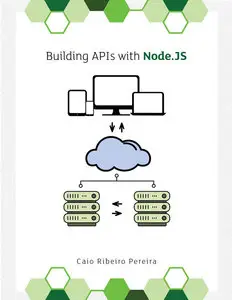Caio Ribeiro Pereira, "Building APIs with Node.js"
English | ISBN: n/a | 2015 | PDF | 152 pages | 3,4 MB
English | ISBN: n/a | 2015 | PDF | 152 pages | 3,4 MB
Currently, we live in a period in which the majority of users use different types of devices to connect to the internet. The most popular devices are smartphones, tablets and notebooks. Developing systems for different types of devices requires the work of building web services, also known by the name of API (Application Program Interface).
Basically, the APIs are back-end systems that are designed to work only with data in a centralized manner, allowing client-side applications to be developed separately, to have a unique interfaces to the final user. These client-side applications are typically mobile apps, desktop applications or web apps.
Since 2010 Node.js increasingly proved to be an excellent platform to solve many problems, especially for building REST APIs. The single-thread architecture that performs non-blocking I/O running on top of JavaScript - which is a very present language in all current browsers - showed good performance in the processing of many kind of applications.
There are some cases of large companies, such as LinkedIn and PayPal, which significantly saved expenses with servers migrating some of their projects to Node.js.
In addition, another advantage of using the Node.js, which captivated many developers, is the low learning curve. After all, who has worked with web development already have at least a basic understanding of the JavaScript language.
In this book, you'll learn in practice how to build scalable APIs in Node.js platform through writing elegant codes using ECMAScript 2015 (aka ES6) and some popular frameworks like Express, Passport, ApiDoc, Mocha, Helmet and more.
The project will be integrated with a SQL database through Sequelize.js and, in the end, you'll build a single page application using only Vanilla JavaScript to consumes the API's data.



